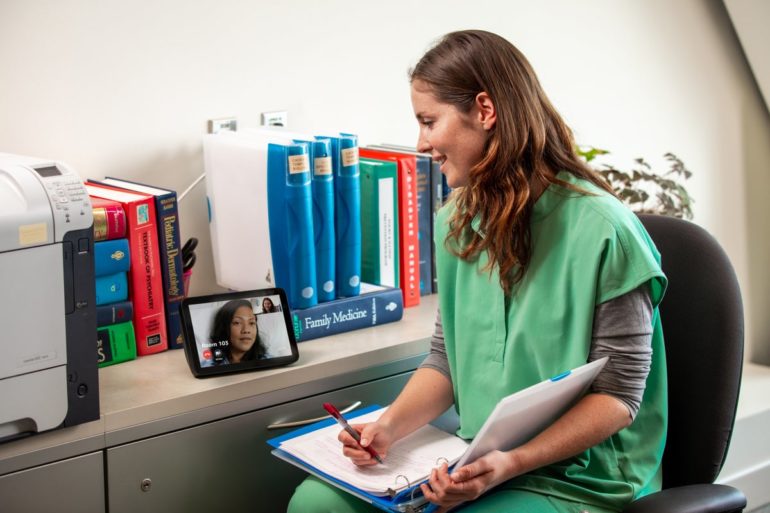Amazon on Monday announced new ways to more easily deploy its voice-based assistant Alexa in healthcare facilities and senior living communities. The new offerings are part of Alexa Smart Properties, the three and-a-half business that creates vertical solutions for deploying and managing Alexa at properties like hotels, apartments and offices.
Amazon decided to expand Alexa Smart Properties to senior living communities and healthcare facilities after the Covid-19 pandemic drove up demand for video-based communications and voice-activated functionality in these settings.
“In the early days of the pandemic, hospitals and senior living communities started reaching out and asking for solutions to enable voice experiences in their properties,” Liron Torres, head of Alexa Smart Properties for Amazon, said to ZDNet. “They saw potential in how voice could connect residents and families. And to enable stronger connection between caregivers and patients when protected gear was limited.”
Alexa Smart Properties tools and APIs enable solution providers to manage and service a fleet of Alexa-enabled devices quickly, remotely and at scale. Amazon is working with solution providers specifically in these two new sector to help customers easily customize and deploy large numbers of devices. For senior living communities, Amazon is working with K4Connect and Lifeline Senior Living, while it’s working with Aiva and Vocera in the healthcare sector.
With the help of solution providers, administrators can build and publish skills that are specific to their properties and which can be integrated with other property management systems. For instance, a resident in a senior living facility could ask, “Alexa, could you ask for my mail to be delivered?” Hospitals and senior living communities can also build and enable HIPAA-eligible skills like medication tracking.
The new healthcare solution is designed both to meet the needs of patients and to increase staff productivity. For instance, caregivers can use a “drop-in calling feature” to quickly check in on patients virtually.
Meanwhile, if a patient needs something like an extra blanket, she can tell Alexa, who will relay the message to a nurse or caregiver. The caregiver can via voice let the patient know they’re on their way. The functionality is designed to be faster than paging a nurse’s station and waiting for a response.
The hospital solution is also intended to make checking into a hospital easier and less stressful, helping to answer questions for patients and offering entertainment like music.
Some of the health systems that are adopting Alexa Smart Properties include Boston Children’s Hospital, Cedars-Sinai, BayCare and Houston Methodist.
For senior living communities, the new offering is largely about helping residents stay in touch with loved ones. It’s also intended to help residents stay informed about updates in the community — some which may be urgent, such as a notification about a Covid infection. Residents can get notifications via their Alexa-enabled devices versus more manual methods that many senior living communities use, such as printing out notifications and slipping them under residents’ doors. Alexa can also help communities streamline activities like check-ins, field requests for maintenance and administrative task.
Senior living communities like Atria and Eskaton are integrating with Alexa Smart Properties at some locations.
To maintain user privacy, no personal information is shared with Alexa to use the Smart Properties system, and voice recordings are not saved. Additionally, residents and patients can disable Alexa’s ability to respond to the wake word.
The expansion of Amazon Smart Properties fits in with the company’s vision for using Alexa to enable ambient computing, Torres said.
“We believe that ambient computing is going to dramatically change the way people interact with technology, both inside and outside the home,” she said. “The magic is you don’t need to be tech savvy, you don’t need to learn a new technology — it just works.”
